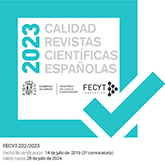La Torre de Augusto en la Campa Torres (Gijón, Asturias). Las antiguas excavaciones y el epígrafe de Calpurnio Pisón
DOI:
https://doi.org/10.3989/aespa.2005.v78.77Keywords:
Historiography, Asturia, port, light-house, commemorative stone, Arae Sestianae, Roman ArmyAbstract
Through the historiographic data and the architectonic and archaeologic study of the Roman remains found during the 18th and 19th Centuries, today disappeared, we present here an hypothesis about the Augustean construction of a big tower in Campa Torres. This would be identified as a lighthouse controlling the entrance of the Gijón's bay. The commemorative stone of Cn. Calpurnius Piso (CIL II, 2703), dated on 9-10 AD, was founded in this building. We cannot accept the identification of this monument as one of the wellknown Arae Sestianae. This light-house, with a symbolic character as well a purpose of informing to the mariners the access of the harbour, would be erected in a militarized region recently conquered.
Downloads
Download data is not yet available.
Downloads
Published
2005-12-30
How to Cite
Fernández Ochoa, C., Morillo Cerdán, Ángel, & Villa Valdés, Ángel. (2005). La Torre de Augusto en la Campa Torres (Gijón, Asturias). Las antiguas excavaciones y el epígrafe de Calpurnio Pisón. Archivo Español De Arqueología, 78(191-192), 129–146. https://doi.org/10.3989/aespa.2005.v78.77
Issue
Section
Articles
License
Copyright (c) 2005 Consejo Superior de Investigaciones Científicas (CSIC)

This work is licensed under a Creative Commons Attribution 4.0 International License.
© CSIC. Manuscripts published in both the printed and online versions of this Journal are the property of Consejo Superior de Investigaciones Científicas, and quoting this source is a requirement for any partial or full reproduction.All contents of this electronic edition, except where otherwise noted, are distributed under a “Creative Commons Attribution 4.0 International” (CC BY 4.0) License. You may read here the basic information and the legal text of the license. The indication of the CC BY 4.0 License must be expressly stated in this way when necessary.
Self-archiving in repositories, personal webpages or similar, of any version other than the published by the Editor, is not allowed.














